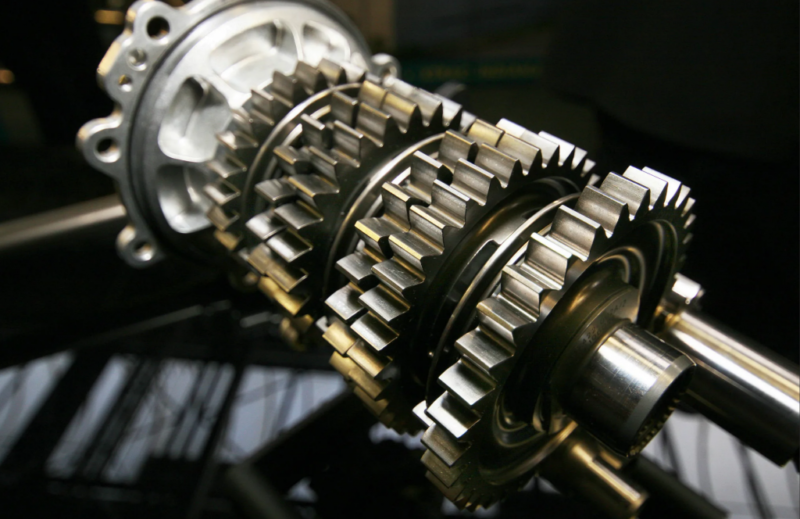Introduction
Acura, the luxury vehicle division of Honda, has gained a reputation for producing high-quality vehicles with advanced features. One such feature is the 10-speed transmission, which promises smooth and efficient gear shifts. However, like any mechanical component, the Acura 10-speed transmission is not immune to problems. In this article, we will explore the common problems associated with this transmission, the symptoms and signs to watch out for, the potential consequences of ignoring these issues, and the repair costs involved.
Common Problems
The Acura 10-speed transmission, despite its advanced design, has been reported to experience a few common problems. These issues can arise due to various factors, including manufacturing defects, wear and tear, or improper maintenance. Let’s take a closer look at some of these problems:
1. Gear Slippage
One of the most frequently reported issues with the Acura 10-speed transmission is gear slippage. This occurs when the transmission fails to engage or hold a particular gear, causing the vehicle to unexpectedly shift into a different gear. Gear slippage can result in a loss of power, reduced fuel efficiency, and potential safety hazards.
2. Rough Shifting
Another problem that Acura owners have encountered is rough shifting. This refers to a jerky or harsh transition between gears, often accompanied by a noticeable jolt or vibration. Rough shifting can be uncomfortable for passengers and may indicate underlying issues with the transmission’s internal components.
3. Delayed Engagement
Some Acura drivers have reported experiencing delayed engagement when shifting gears. This means that there is a noticeable delay between selecting a gear and the transmission actually engaging it. This can lead to frustration, especially in situations where quick acceleration is required.
Symptoms and Signs
Identifying the symptoms and signs associated with Acura 10-speed transmission problems is crucial for prompt diagnosis and repair. Here are some indicators that may suggest an issue with your transmission:
1. Warning Lights

If the transmission control module detects a problem, it may trigger the check engine light or a specific transmission warning light on your dashboard. These lights serve as an early warning system and should not be ignored.
2. Strange Noises
Unusual noises coming from the transmission, such as grinding, whining, or clunking sounds, can indicate internal damage or wear. These noises should be investigated promptly to prevent further damage.
3. Fluid Leaks
Leaking transmission fluid is a clear sign of a problem. If you notice red or brown fluid pooling underneath your vehicle, it is essential to have the transmission inspected and repaired as soon as possible.
4. Slipping Gears
If you experience a sudden loss of power or RPM fluctuations while driving, it may be a sign of gear slippage. This can be dangerous, especially when merging onto highways or climbing steep inclines.
Consequences
Ignoring Acura 10-speed transmission problems can have serious consequences for both your vehicle’s performance and your safety on the road. Some potential consequences include:
1. Reduced Fuel Efficiency
Transmission issues can lead to decreased fuel efficiency, causing you to spend more money on gas in the long run. This can be particularly frustrating for Acura owners who expect their vehicles to deliver optimal fuel economy.
2. Increased Wear and Tear
If left unaddressed, transmission problems can lead to increased wear and tear on other components, such as the clutch, torque converter, or drivetrain. This can result in more extensive and costly repairs down the line.
3. Safety Hazards
A malfunctioning transmission can compromise your safety on the road. Issues like gear slippage or delayed engagement can lead to unexpected loss of power, making it difficult to control the vehicle and potentially causing accidents.
Repair Cost
The cost of repairing an Acura 10-speed transmission can vary depending on the extent of the damage and the specific model of your vehicle. In general, transmission repairs tend to be expensive due to the complexity of the system. However, it is important to address transmission problems promptly to prevent further damage and potentially reduce repair costs in the long run.
| Transmission Problem | Estimated Repair Cost |
|---|---|
| Gear Slippage | $500 – $1500 |
| Rough Shifting | $300 – $1000 |
| Delayed Engagement | $400 – $1200 |
Please note that these are rough estimates and actual repair costs may vary depending on various factors, including labor rates and the availability of replacement parts.
Conclusion
While the Acura 10-speed transmission offers advanced features and smooth gear shifts, it is not immune to problems. Gear slippage, rough shifting, and delayed engagement are some common issues that Acura owners may encounter. Recognizing the symptoms and signs of transmission problems is crucial for timely repairs and avoiding potential consequences such as reduced fuel efficiency and safety hazards. If you suspect any issues with your Acura’s transmission, it is advisable to consult a qualified technician who can diagnose and repair the problem efficiently. Remember, addressing transmission problems promptly can save you from more extensive repairs and higher costs in the future.
